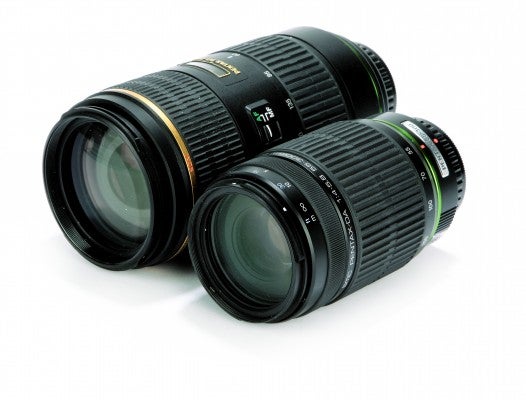The Pentax smc DA 60-250mm f/4.0 ED (IF) SDM is a high-end lens that promises a professional level of performance
Pentax smc DA 60-250mm f/4.0 ED (IF) SDM Review
Recognising that a lot of the lens-plus-camera mass could reside in the lens, Pentax has very sensibly equipped its 60-250mm zoom with a tripod-mounting collar that better balances the combination and avoids stressing the host camera’s base-plate.
Less obvious benefits include a weatherproof rubber ring on the mounting flange and Super Protect (SP) coating on the front element. And the lens hood is a petal type that provides better shading than is possible with a simpler cylindrical type.
Inside there is a Sonic Drive Motor (SDM) AF system that is exceptionally quiet but which also proved to be exceptionally slow on the K200D body used for this review. To be fair, the K200D is getting somewhat long in the tooth and AF speed on a more recent host body should be considerably quicker.
Handling is excellent thanks to the overall proportions of the lens. The rear half of the barrel is home to a broad zoom ring that is marked with focal-lengths at 60mm, 85mm, 135mm, 200mm and 250mm. The mechanism is a little heavy but very smooth.
The rotatable tripod-mounting collar sits behind the zoom ring: if it hinders hand-held operation then removal of the mounting plate is very straightforward by slackening the screw that acts on a spring-loaded locking claw. This is a much simpler system than having to remove the entire collar.
The front half of the barrel contains an equally broad manual-focusing ring and a focused-distance window. The movement is smooth, offers just the right amount of resistance and acts across a relatively short 50-degree throw, making focusing very quick.
This in turn made the K200D’s slow AF performance all the more frustrating. Focusing is internal so there is no need to keep fingers clear of the MF ring: in fact manual adjustments can be applied at any time so there is every reason to adopt a grip that covers the zoom ring and MF ring with equal ease.
Technical testing produced an outstanding set of MTF curves that, except for wide-open at 60mm, remained above the crucial 0.25 cycles-per-pixel threshold for all focal lengths and all aperture settings. In view of the high peak resolutions and consistency measured, the full 20/20 score has been awarded despite the one exception noted. Some chromatic aberration was observed in technical images but not to any significant extent in any real-world testing.





